EXTERNAL LINKS:






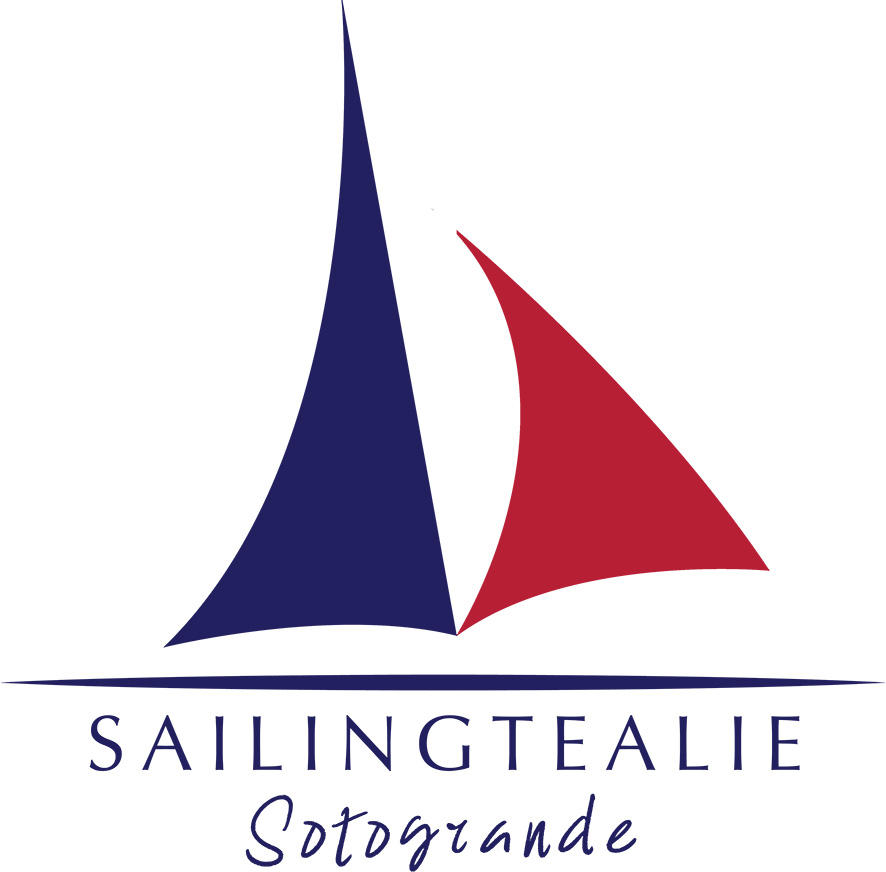
WE ARE HERE
SOTOGRANDE is the largest privately owned residential development in Andalusia, Spain. It is a gated community in the municipality of San Roque. Located 25 km northeast of Gibraltar, Sotogrande is composed of a 25-square-kilometre stretch from the Mediterranean Sea back into the foothills of Sierra Almenara, providing contrasting views of sea, hills, cork forests and green fairways, including the Rock of Gibraltar and the northern coast of Morocco.
HISTORY
Sotogrande was developed by the industrialist couple from the Philippines,
Don José McMicking (Joseph Rafael McMicking y Ynchausti, 1908-1990) and Doña Mercedes Zóbel, with support from their nephews
Jaime Zóbel and
Enrique Zóbel. The McMickings, having seen the idyllic coasts in 1962, acquired five neighboring farms with the idea of creating a luxurious residential development by the Mediterranean. In May 2006, Sotogrande was featured in The Times as having the most expensive homes in Europe. There are a number of artificial lakes and five golf courses, including the
Valderrama Golf Club created by
Jaime Ortiz-Patiño and the
San Roque Golf
& Resort.
Sotogrande port was established in 1988.
ARCHITECTURE
Sotogrande is well known as an architectural showcase on the Costa del Sol, with styles varying from the traditional Andalusian to mid-century modern, to more modern and unusual designs, including moorish/mudéjar style homes and a Swiss chalet. In 2008, the local government declared three buildings as of cultural interest, protecting them from reform or demolition. These included the Biddle House by Francisco Javier Carvajal, the Zóbel house by José Antonio Coderch, and the Real Club de Golf by Luis Gutierrez Soto.
A specially built man-made lagoon is part of the newest developments in Sotogrande within the La Reserva gated residential community in the hills of Sotogrande.
SPORT
Sotogrande has varied sporting facilities. It has five golf courses, including
Valderrama Golf Club, which was host to the
European Tour's Volvo Masters and the
Ryder Cup in 1997 as well as of the
LIV Golf tour in 2023 and in
2024. It also has three tennis and padel clubs, a rugby club, a diving club and two beach clubs, a kayak/sailing club, the
Santa Maria Polo Club, riding stables, and a marina.
NATURE
River Guadiaro and Estuary has a natural area of 27 hectares and the only marshland on this part of the coast, has been designated as an Andalusian national park, wildlife and nature reserve.[citation needed] The reserve often hosts migratory birds on their route to and from Africa.
ECONOMY
Sotogrande's economy is primarily driven by tourism, luxury real estate, and the establishment of various businesses, particularly in sectors like hospitality, real estate services, and sports. It's a well-known luxury destination, attracting international buyers and investors, which has contributed to a strong and resilient property market, even during economic downturns.
POPULATION
Sotogrande's permanent resident population is around 10,000. This number is estimated to triple during the summer months when tourism increases, reaching around 30,000. While some sources list the population as just under 2,600 based on official census data, this is a more recent number. Sotogrande is a residential resort and not a town, which is why there isn't a single, fixed population number.
Autonomous community : Andalusia
Province : Cádiz
Comarca : Campo de Gibraltar
Municipality : San Roque
Established : 1964
Postal code : 11310
PHOTOS AND HISTORY
Source:
JUNTA DE ANDALUCÍA
The photo below from 1956 shows in detail the state of this territory before its tourist transformation: the occupation for forest uses in the Sierra de Almenara, the agricultural occupation mainly with cereal uses and orchards of the valley and the flood plain, but above all the importance of the natural formations linked to the coast and the estuary. On one side to the south, on the beach of Sotogrande, the power and development of the coastal dunes is observed. To the north at the mouth, the coastal arrow that advances or retreats subjected to the thrusts of the sea or the avenues of the river, and that now almost closes the estuary. A little further north is the Torreguadiaro lagoon, a dam that together with the remains of pipes give an idea of the existence of an ancient delta. At the same mouth, and surrounded to the south by an old channel, a maritime space. In the vicinity of the riverbed, the existence of an abandoned channel is observed in parallel, which gives an idea of the dynamics of the river, whose avenues significantly altered the margins of the river.
Regarding urbanized spaces and infrastructures: the towns of Guadiaro and San Enrique de Guadiaro remain as small entities (1,203 and 1,126 inhabitants in the 1960 census), and the Barcelona-Cádiz national road, precedent of the N-340, is already built, although with a different layout from the current one, as it saved the Guadiaro river much further north, with a modest iron bridge. To the south of the town of Guadiaro is the Paniagua farmhouse, a latifundium whose purchase gave rise to the tourist implantation that would take place a decade later, and that was the one that caused the radical transformation of this territory and its economic expectations.
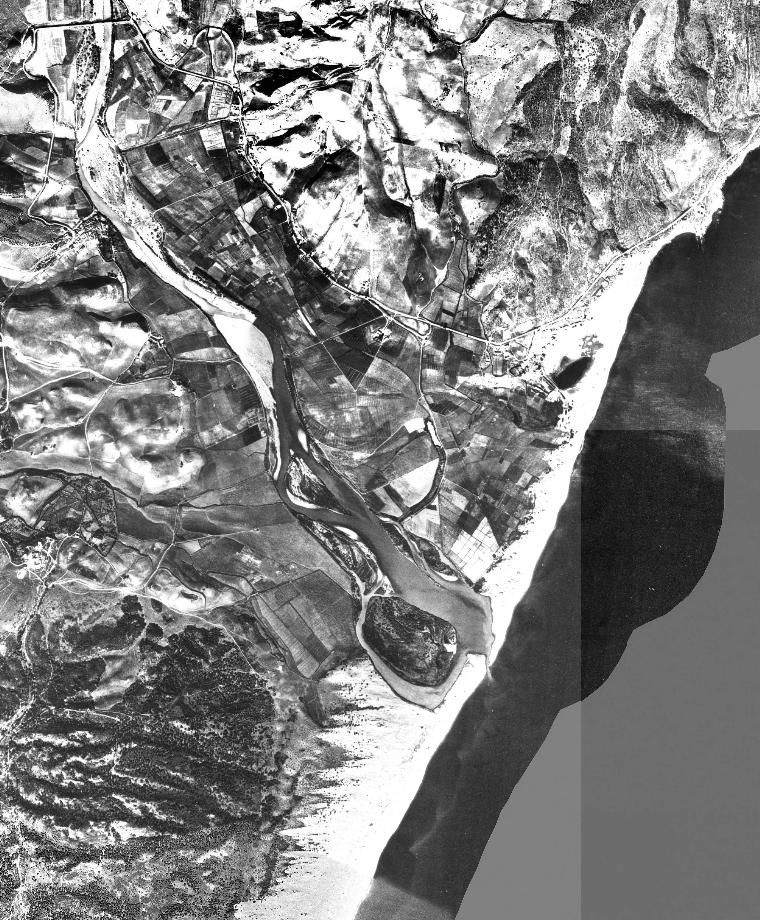 Desembocadura del Guadiaro 1956. American Flight, Series B. CECAF Ministry of Defense
Implementation of the tourist resort of Sotogrande: origins and first development (1962-74)
Desembocadura del Guadiaro 1956. American Flight, Series B. CECAF Ministry of Defense
Implementation of the tourist resort of Sotogrande: origins and first development (1962-74)
Joseph McMicking, a Filipino businessman trained in the United States, where he started from 1948 an important and successful business empire that included important capital participations in Filipino and American companies, commissioned his nephew Fredy Melian to look for land somewhere in the Mediterranean basin for the construction of an elite urbanization.
A large farm with at least one kilometer of coastline was sought, in addition to abundant water reserves and good accessibility. The first option found was the purchase of Formentera Island. However, in 1962, he dedicated himself to touring the Spanish Mediterranean coast completely by motorcycle and gathered the proposals that he would take back to the Philippines.
After studying all the options, Joseph McMicking and his nephews Jaime and Enrique Zobel decided to buy the Finca Paniagua, located in the municipality of San Roque, very close to the Peñón de Gibraltar. The location had enough water with the nearby Guadiaro River, in addition to a nearby airport in the British colony and the option of acquiring adjacent farms, such as those of Sotogrande, Conchudo or Valderrama.
The Francoist authorities did not put obstacles in McMicking's way to develop Sotogrande, at a time when foreigners were still not allowed to buy land without the approval of the military, and given the location of the urbanization in a sensitive place due to its proximity to the Rock of Gibraltar and Morocco, which would have foreshadowed their veto, but it was not the case.
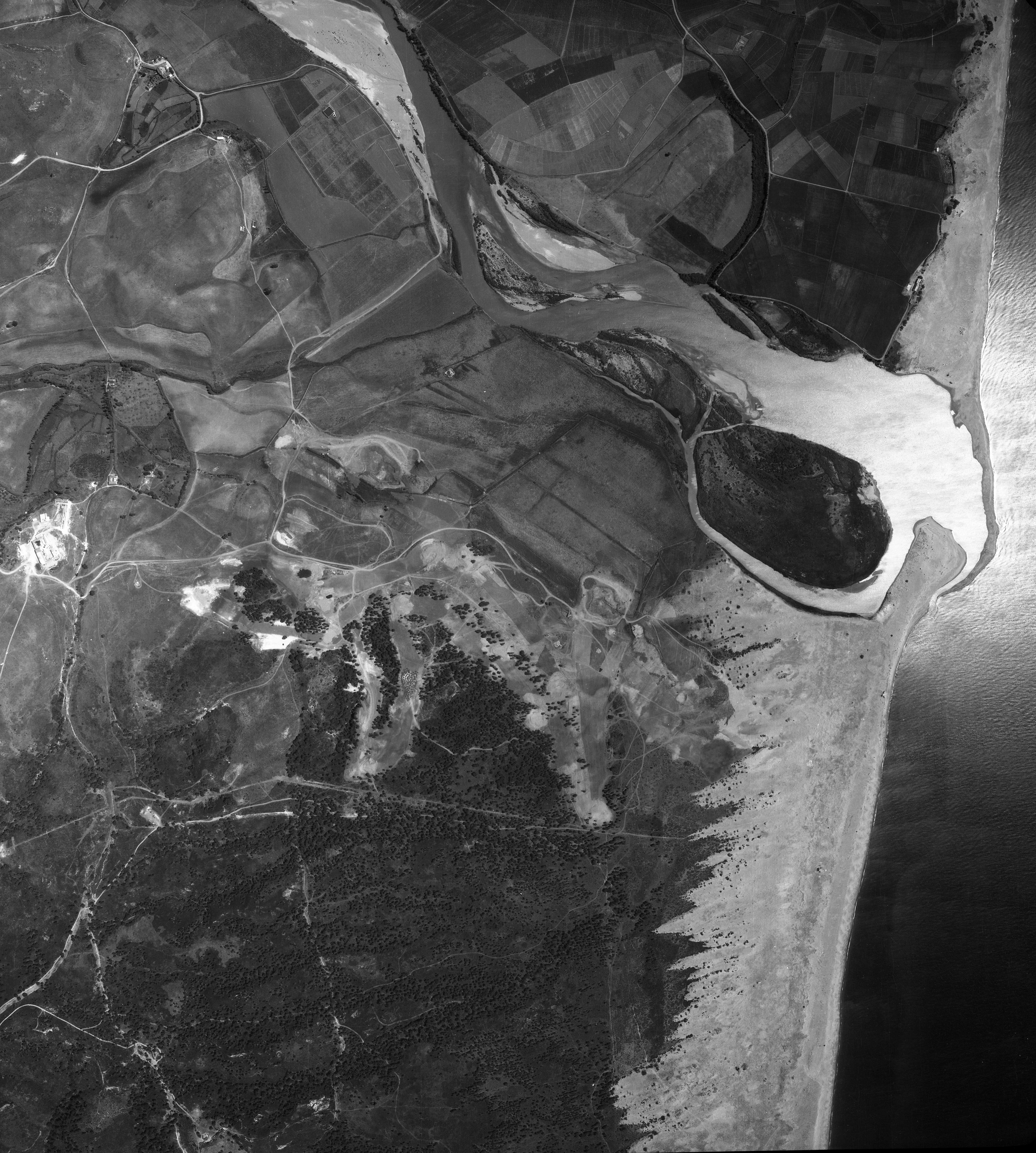
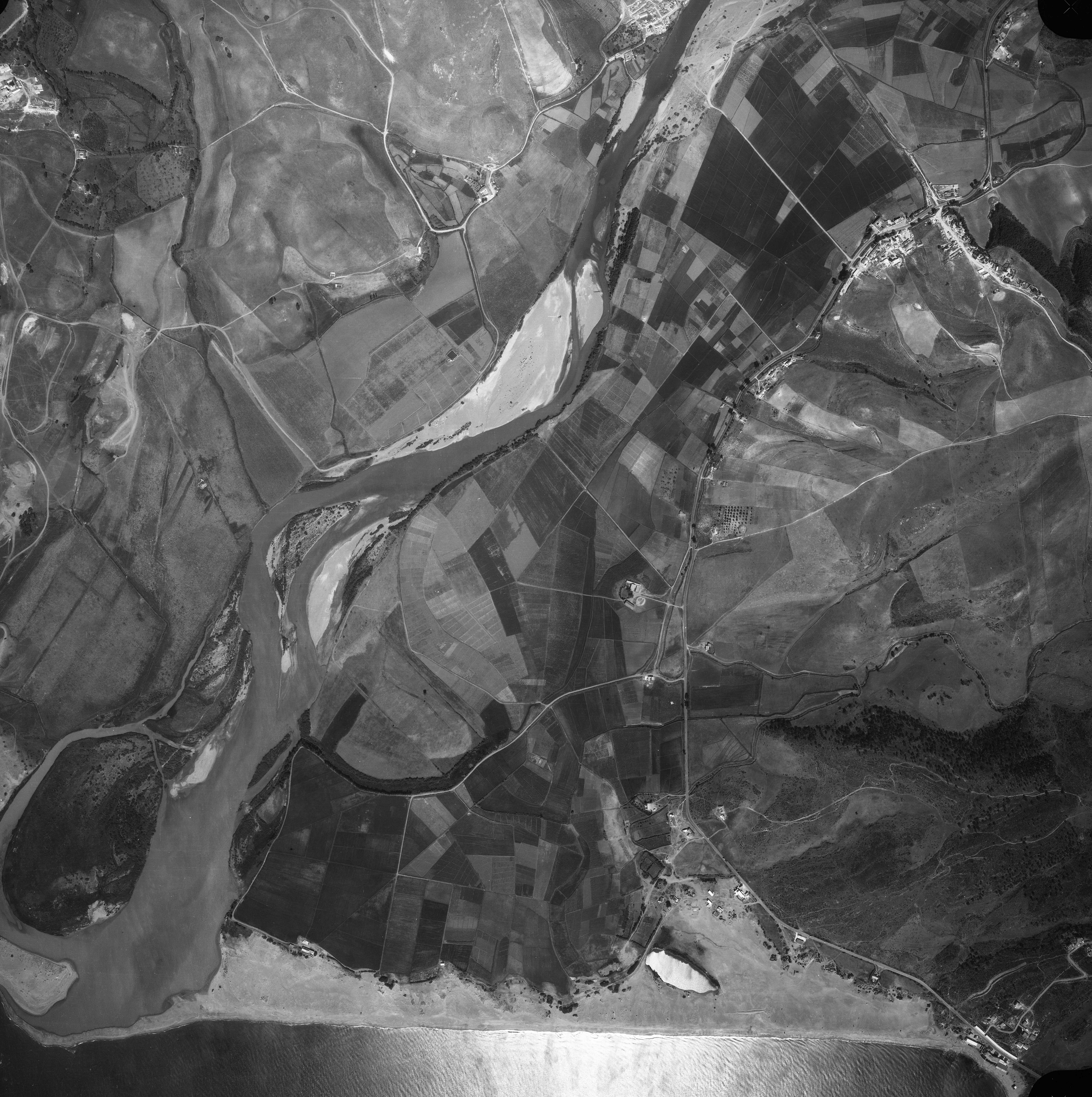 ESBOGA flight frames of July 3, 1963. Photo library of the IECA.
ESBOGA flight frames of July 3, 1963. Photo library of the IECA.
In these images, which are not oriented to the north, the state of the estuary is observed just when the works of the golf course and the Sotogrande urbanization begin. In fact, you can see tracks and roads and heavy vehicles, in what seem to be the first earthworks. In a surprisingly short period of time since the land is purchased, the urbanization and construction works of the golf course are started and carried out.
McMicking based its project on quality parameters completely unpublished in Spain. He hired the best golf architect of the moment, Robert Trent Jones, and made the entire farm available to choose the perfect location for the first golf course, and then project the construction of the urbanization around. In the following years, other infrastructures would be built that would make the urbanization more attractive. This is how Sotogrande S.A built in 1965 the polo court of La Playa, the Tennis Hotel Sotogrande, and the Club de Playa El Cucurucho now known as
Trocadero Sotogrande, as well as the first bungalows adjacent to the Real Club de Golf Sotogrande. Renowned architects intervene in these first works, such as José Antonio Corrales Gutiérrez or Luis Gutiérrez Soto, some of which have been declared as an Asset of Cultural Interest in the General Catalog of Andalusian Historical Heritage, within the inventory of contemporary architecture approved in 2009 by the Junta de Andalucía.
He opted for maximum landscape integration: the burial of the pipes and electricity lines. The streets of the urbanization were designed following the specifications of the construction of American highways. This period of first implementation can be considered to be closed in 1974 when on the other side of the N-340 road the Sotogrande New Golf course is implemented, then known as Real Club Valderrama, the beginning of a much broader development of Sotogrande, overflowing by the success of the initial approach.
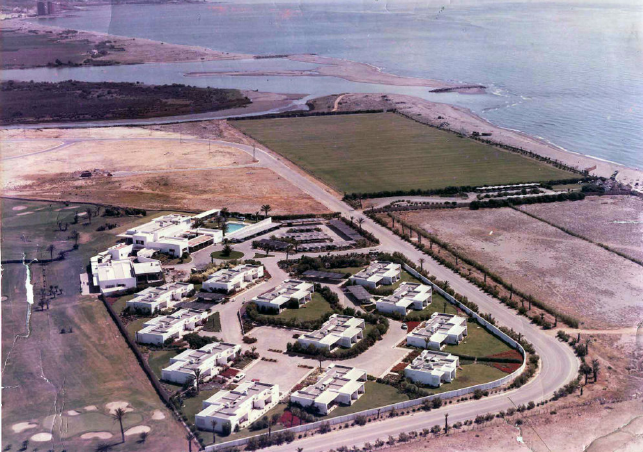
In the first place the Clubhouse and the first houses designed by Luis Gutiérrez de Soto in 1964, next to the field of the Real Club de Golf de Sotogrande. In its vicinity and on the beach, the polo court of La Playa, where this sporting activity began. Behind the arrow and the mouth of the Guadiaro, unaltered. Photograph dated in the sixties of the last century.
Source:
Santa Maria Polo Club
The orthophotograph of the 1977 Interministerial Flight shows the state of the territory around Sotogrande after the first implantation of the resort. It highlights the importance of the golf course and the urbanization that has emerged in its environment, still unfilled, but in which unique buildings are installed milestones of contemporary architecture, such as the cases of the Biddle House (1966) or the Zobel House (1970).
The golf course marked a milestone in the construction of courses in Europe, not only for the unique design made by Trent Jones, but for the innovations that surrounded the project: it was the first course in Europe planted with Bermuda 419 and the first to install a fully automated irrigation system.
In the estuary, on the left bank of the mouth, a breakwater has been built that alters the arrow and the coastal dynamics. In its vicinity, a new bridge is under construction that connects both banks and facilitates the immediate extension of the urbanization on the left bank. Another of the sports facilities that constitutes a landmark is the polo court of La Playa: in 1965 Enrique Zobel created the Santa María Polo Club, one of the most important in Europe, and whose activity will mark Sotogrande as a tourist destination linked to elite sports.
Accessibility to this territory is improved with the consolidation of the N-340 as an articulating axis with the Costa del Sol: a new route is built that brings the road closer to the coast avoiding the annoying rodeo through Guadiaro and San Enrique. In the wake of these new tourist developments appear two new settlements: Torreguadiaro to the north and Pueblo Nuevo. The first is a middle-class residential tourist settlement and the second becomes the service and commercial center of Sotogrande and the residence of its workers, taking advantage of the proximity of the new road.
In the rustic soil the most important transformation is the new planting of irrigated fruit trees, specifically citrus, in the vegas of Guadiaro. Demographic growth is very limited: in the 1981 nomenclature Guadiaro (which contained the population of Pueblo Nuevo and Sotogrande) reaches 1,998 inhabitants, while San Enrique (which included Torreguadiaro), 1,414 inhabitants.
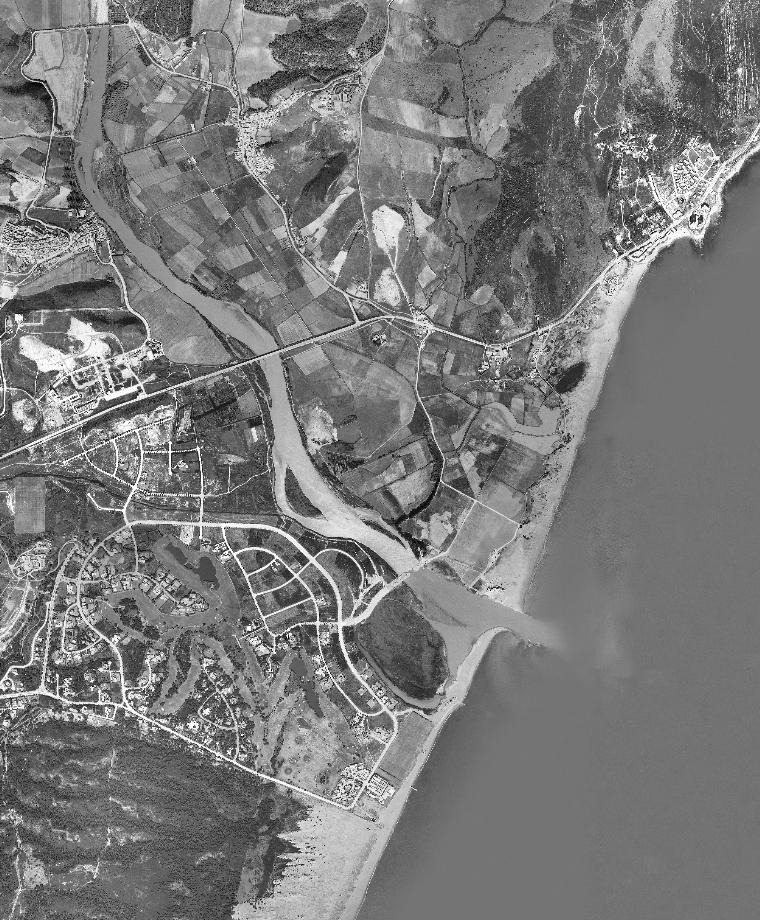 Orthophotography of the Interministerial Flight, 1977. National Geographic Institute
Consolidation of Sotogrande as one of the main world destinations for golf tourism, and as a tourist and sports reference in Andalusia.
Orthophotography of the Interministerial Flight, 1977. National Geographic Institute
Consolidation of Sotogrande as one of the main world destinations for golf tourism, and as a tourist and sports reference in Andalusia.
The implementation of a marina, the construction of four new golf courses, the consolidation of Valderrama as one of the best clubs in the world and the polo club as a European reference of this sport, have confirmed Sotogrande as one of the tourist destinations of greatest entity and level in Andalusia and Europe. The orthophotography of the flight of the Junta de Andalucía of 2001 shows the strong growth experienced in all aspects.
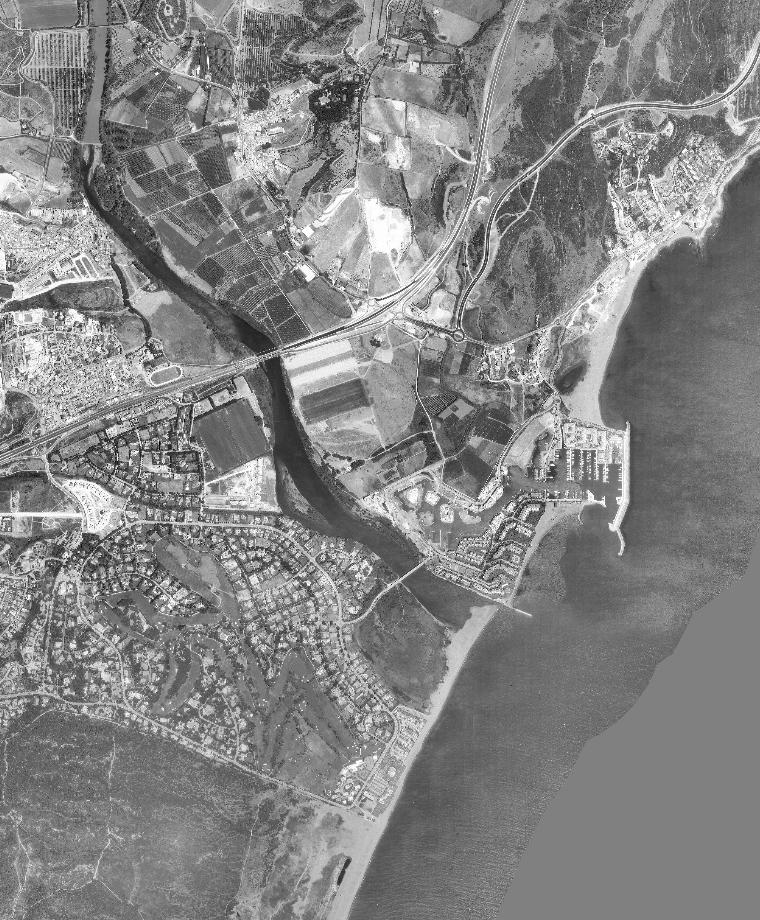 Orthophotography of the Junta de Andalucía, 2001. IECA
Orthophotography of the Junta de Andalucía, 2001. IECA
Perhaps the most outstanding element is the construction on the left bank of the estuary of a marina with 1,380 docks, opened in 1987 and to which 1,426 homes, a hotel and two commercial areas are associated. In conjoining, an old pipe is also dredged to open a marina in the 90s. The construction of this port meant the disappearance of part of the dune system of Torreguadiaro beach and the alteration of the dynamics of the estuary, which was considered a first-rate ecological attack. This pressure on the estuary is countered by the approval of the Natural Park of the Guadiaro River Estuary in 1989, which protects 27 hectares, remains of the old marshes, today very crowded, close to the mouth, the last exponent of the system of pipes and wetlands of the estuary. Of the lake areas once existing at this mouth, only a piece of canal is preserved in the southwestern part, and in a northerly direction the Torreguadiaro lagoon, the last natural remnant of the old delta that existed around the mouth of the Guadiaro River. Despite the small superficial entity of the protected space, its strategic location in the Strait of Gibraltar, favors the presence of a rich variety of birds, having observed at least 229 different species.
The beach court, destroyed by a storm in 1984, the polo club built new courts: three in the complex called El Río, adjacent to Pueblo Nuevo, and another three in the Iron Bridge. In 1988 on the Sotogrande New golf course, north of Pueblo Nuevo, and on a magnificent cork oak, arises the Real Club Valderrama, one of the best courses in the world that in 1997 hosts the Ryder Cup, an international golf tournament whose celebration is held for the first and only time in continental Europe. This event accelerated the conversion of the N-340 into a highway, the A-7. At the same time, the Costa del Sol toll highway (AP-7) is being built and comes into service. Both important infrastructures connect to each other near the Guadiaro River, which configures it as an important communications node.
The orthophoto of the National Orthophotography Plan of 2013, shows a final stage of this process: the port facilities are consolidated with the construction of a small lake town with luxury apartments on artificial islands and piers, which is what can be seen today in the area of the Marina de Sotogrande. In the ortho there is the expansion of the courts dedicated to polo, with three new ones built between 2002 and 2008 in the area called Los Pinos, in the vicinity of the viaduct with which the A-7 saves the Guadiaro, magnificent facilities that are used in the winter season by numerous European sports clubs that carry out their winter internship in Sotogrande. Santa María Polo Club has been gaining positions to be today one of the three most important polo clubs in Europe, being the only polo club in the world that celebrates two scoring tournaments of the international circuit.
On the coastal front there is a retreat of the coastline, specifically of the Sotogrande beach in the vicinity of the Club House, a built space that has had to be defended with a storm breakwater when it was left without a beach.
The gradual expansion of what is now known as Sotogrande, especially towards the North, outside of orthophotography, has practically meant that Pueblo Nuevo forms an undifferentiated nucleus with Guadiario, and on the other hand that new golf courses have been built on the adjacent cork grove. Among all of them, Valderrama stands out. This field has been number one in Continental Europe since 1989 uninterruptedly and is probably one of the best in the world according to professional athletes and the main specialized media. Valderrama's record is impressive: home to the Ryder Cup '97, the Volvo Masters Tournament and the American Express Golf World Championships. This course built in 1974 is located in a unique natural enclave, originally called Sotogrande New. Later, in 1981, it was renamed Las Aves. In 1984, Jaime Ortiz-Patiño, French-Bolivian tycoon of the tin, acquired the field to transform it into a field capable of hosting the highest competitions. Robert Trent Jones was in charge of redesigning the original layout. The end result was a field that poses a real challenge to the player: the impressive layout runs between more than three thousand cork oaks, two thousand pines and five hundred centenary olive trees. In 2010 Ortiz-Patiño reached an agreement to sell the company Soto Properties, owner of the golf course, to the Australian Greg Norman, one of the best players in history, who acquired one of the brands with the greatest value in the world of golf, for reputation and recognition, to strengthen its position in Europe and consolidate its leadership in the business of golf events worldwide.
Today the Sotogrande Urbanization has five of the nine golf courses of the municipality of San Roque within the urbanization itself: Valderrama (number one in continental Europe), Real Club de Golf Sotogrande (number 7 of the same ranking), Almenara Golf, La Cañada and La Reserva de Sotogrande. In addition to the nine polo courts, we must also mention other quality sports facilities such as the Sotogrande Marina and the Sotogrande Marina for lovers of sailing and water sports, which has the Real Club Marítimo de Sotogrande among its excellent facilities. It also has tennis and paddle clubs, an equestrian center and two beach clubs. This sports and leisure offer is completed with a high-level hotel floor.
The urban structure of Sotogrande and its environment is polynuclear and somewhat complex: six population centers with different characteristics and dynamics are distinguished, but that share common equipment under the common and indistinct name of Sotogrande or Guadiaro. San Enrique is the most linked to traditional activities with a stable population (973 in 2001 and 999 in 2016); Guadiaro and Pueblo Nuevo already form an undifferentiated continuum and are characterized by their mixed character by hosting commercial, endowment and residential activities of the whole, and have a remarkable demographic dynamic (growing from 1,601 to 2,220 inhabitants and from 897 to 1,430 inhabitants between 2001 and 2016). Torreguadiaro (from 681 to 983 inhabitants), Sotogrande (from 796 to 1,904 inhabitants) and the Port of Sotogrande (from 106 to 438 inhabitants) are tourist settlements that are experiencing a remarkable growth linked to the consolidation of urbanized space, or to the change in habits of the owners of second homes, who are registered and making use as a habitual home.
 Orthophotography of the National Aerial Orthophotography Plan, 2013
SOTOGRANDE TODAY
Orthophotography of the National Aerial Orthophotography Plan, 2013
SOTOGRANDE TODAY
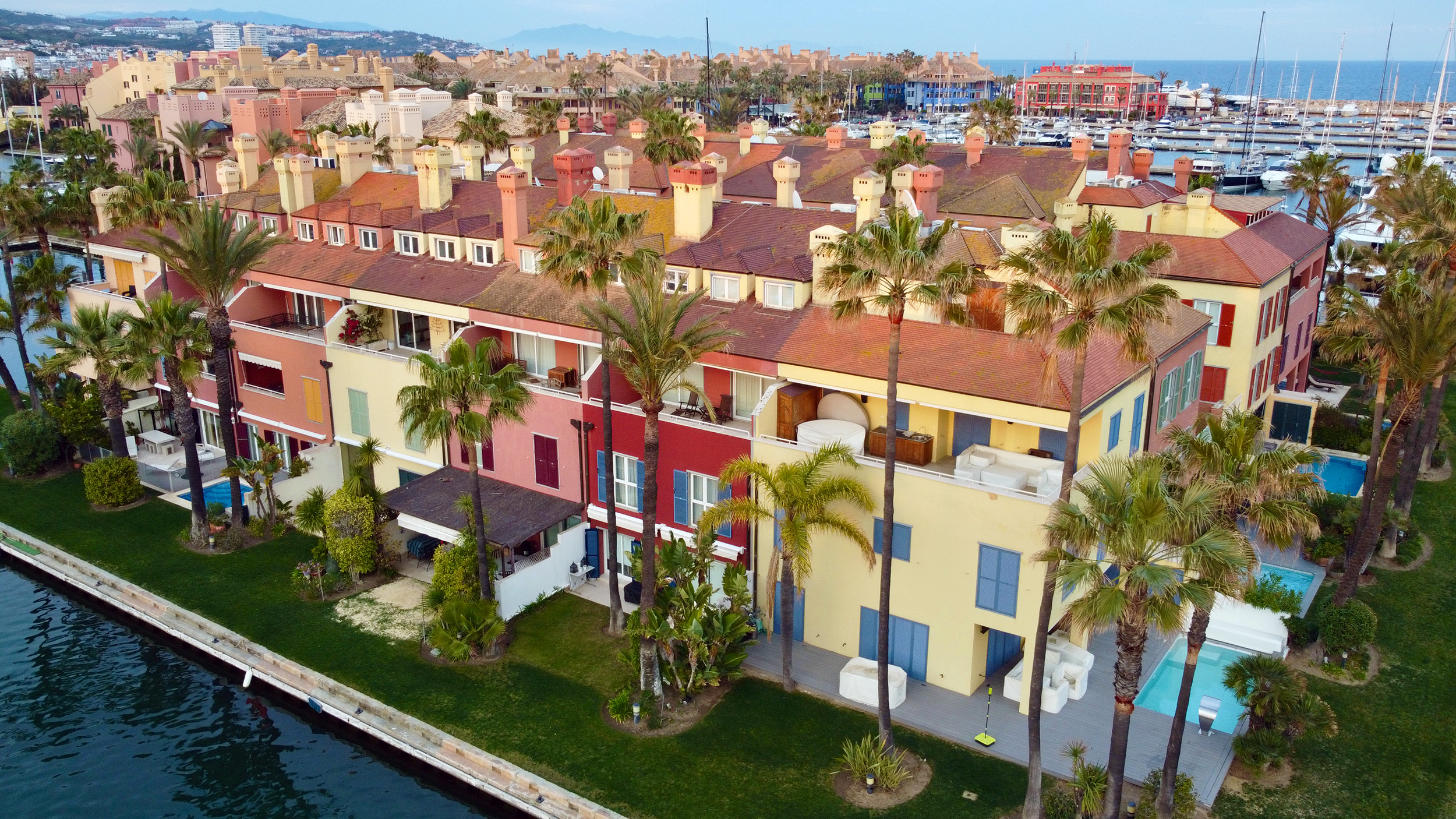






 WE ARE HERE
WE ARE HERE








